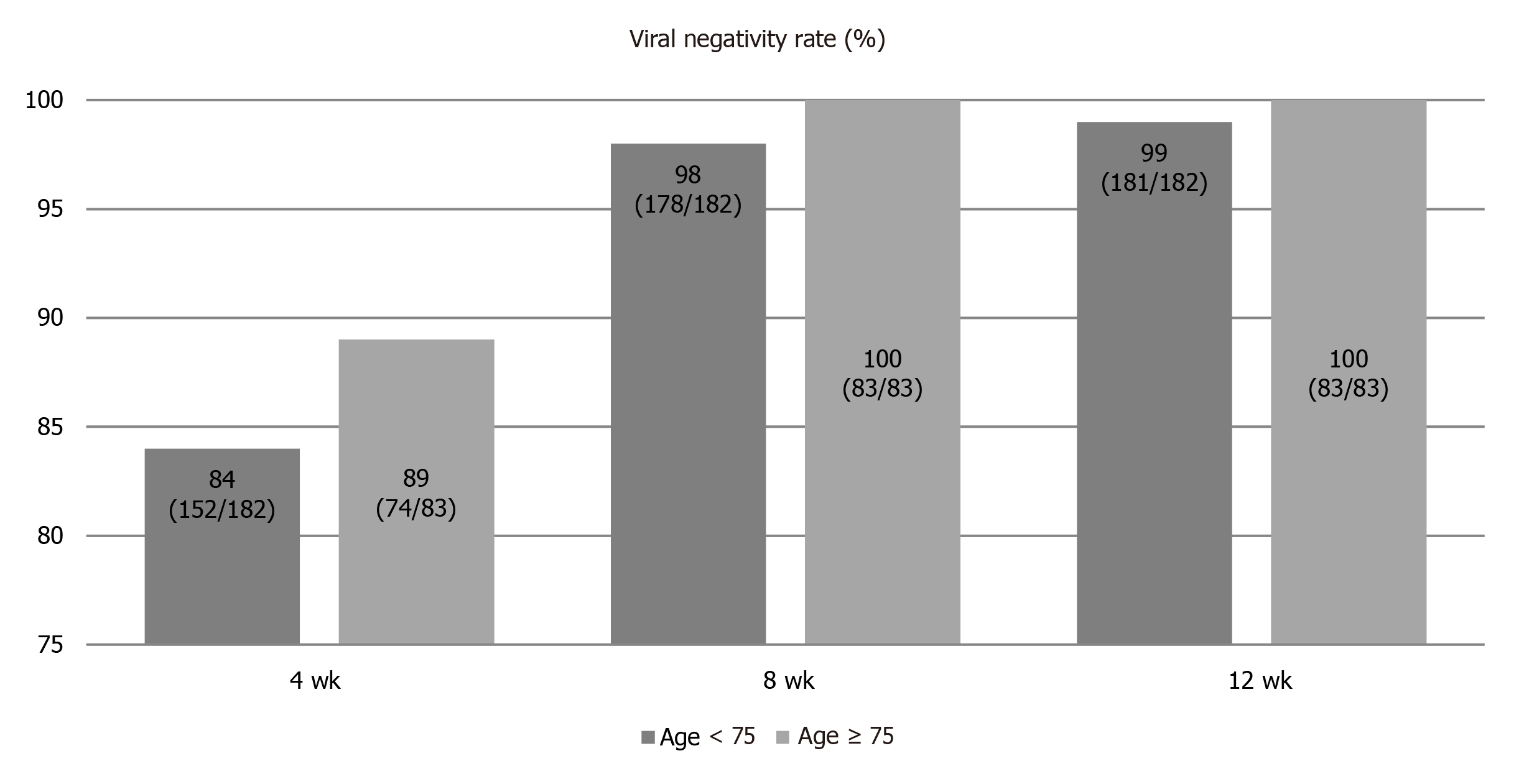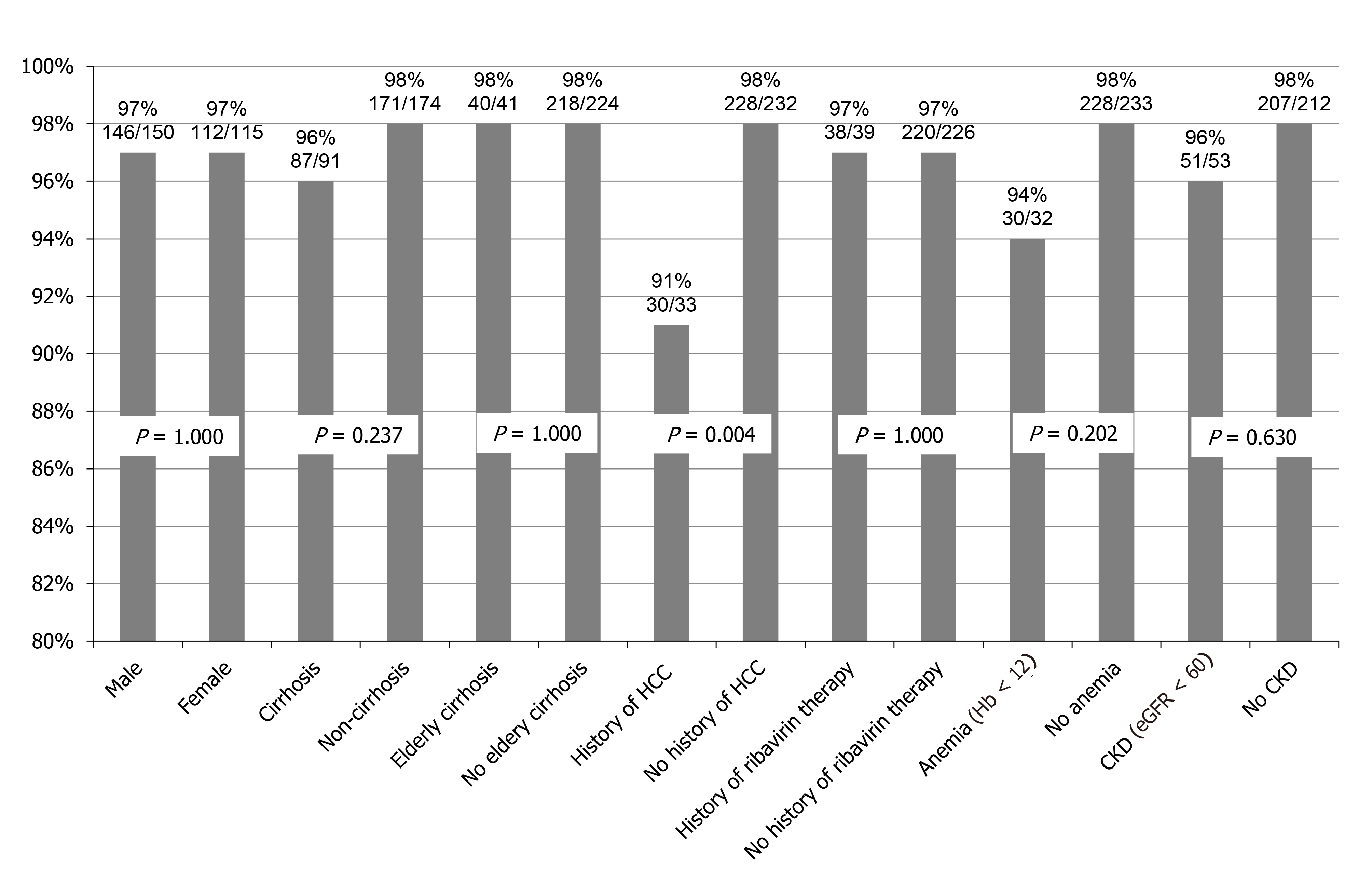Copyright
©The Author(s) 2020.
World J Hepatol. Sep 27, 2020; 12(9): 672-684
Published online Sep 27, 2020. doi: 10.4254/wjh.v12.i9.672
Published online Sep 27, 2020. doi: 10.4254/wjh.v12.i9.672
Figure 1 Sustained virological response rates according to age groups.
The sustained virological response rates for the overall cohort, patients < 65-years-old, patients ≥ 65-years-old but < 75-years-old, and patients ≥ 75-years-old are 97% (258/265), 98% (93/95), 97% (84/87), and 98% (81/83), respectively. No significant differences are apparent among age groups (P = 0.842).
Figure 2 Comparison of viral negativity rates between patients ≥ 75-years-old and < 75-years-old during treatment.
Rapid virological response rates of patients ≥ 75-years-old and < 75-years-old are 84% and 89%, respectively. Although rapid virological response rates tend to be higher in patients ≥ 75-years-old than in patients < 75-years-old, the difference is not significant (P = 0.266). End-of-treatment response rates for patients ≥ 75-years-old and < 75-years-old are 99% and 100%, respectively. No significant difference is seen between groups (P = 1.000).
Figure 3 Sustained virological response rates according to background factors.
Although no significant differences are seen in comparisons of sustained virological response rates according to sex, cirrhosis, elderly cirrhosis, interferon plus ribavirin therapy, anemia (hemoglobin < 12 g/dL), or chronic kidney disease (estimated glomerular filtration rate < 60 mL/min/1.73 m2), a significant difference is evident between patients with and without a history of hepatocellular carcinoma treatment (P = 0.004). CKD: Chronic kidney disease; eGFR: Estimated glomerular filtration rate; Hb: Hemoglobin; HCC: Hepatocellular carcinoma.
- Citation: Tamai H, Shingaki N, Ida Y, Shimizu R, Maeshima S, Okamura J, Kawashima A, Nakao T, Hara T, Matsutani H, Nishikawa I, Higashi K. Sofosbuvir plus ribavirin is tolerable and effective even in elderly patients 75-years-old and over. World J Hepatol 2020; 12(9): 672-684
- URL: https://www.wjgnet.com/1948-5182/full/v12/i9/672.htm
- DOI: https://dx.doi.org/10.4254/wjh.v12.i9.672











